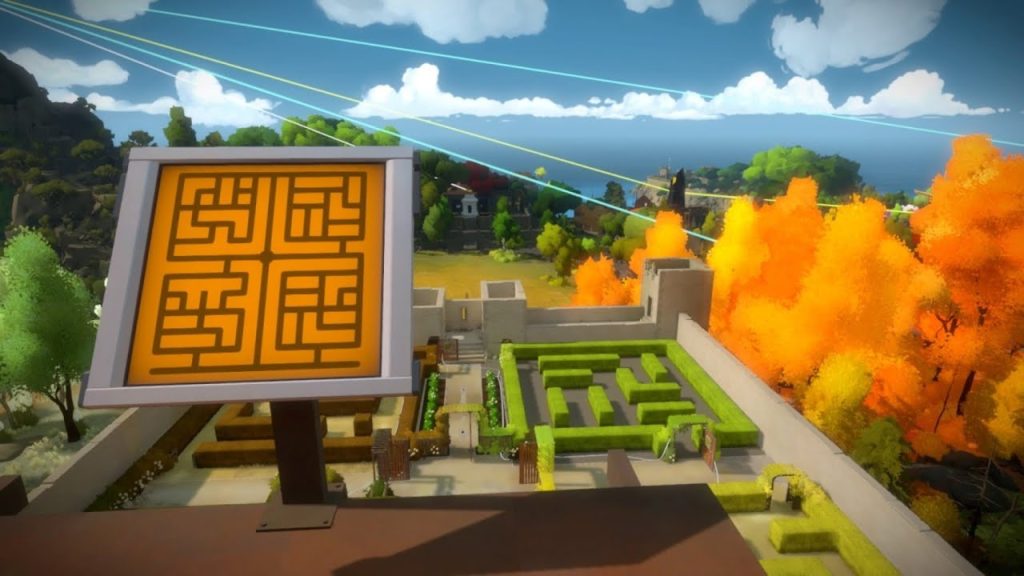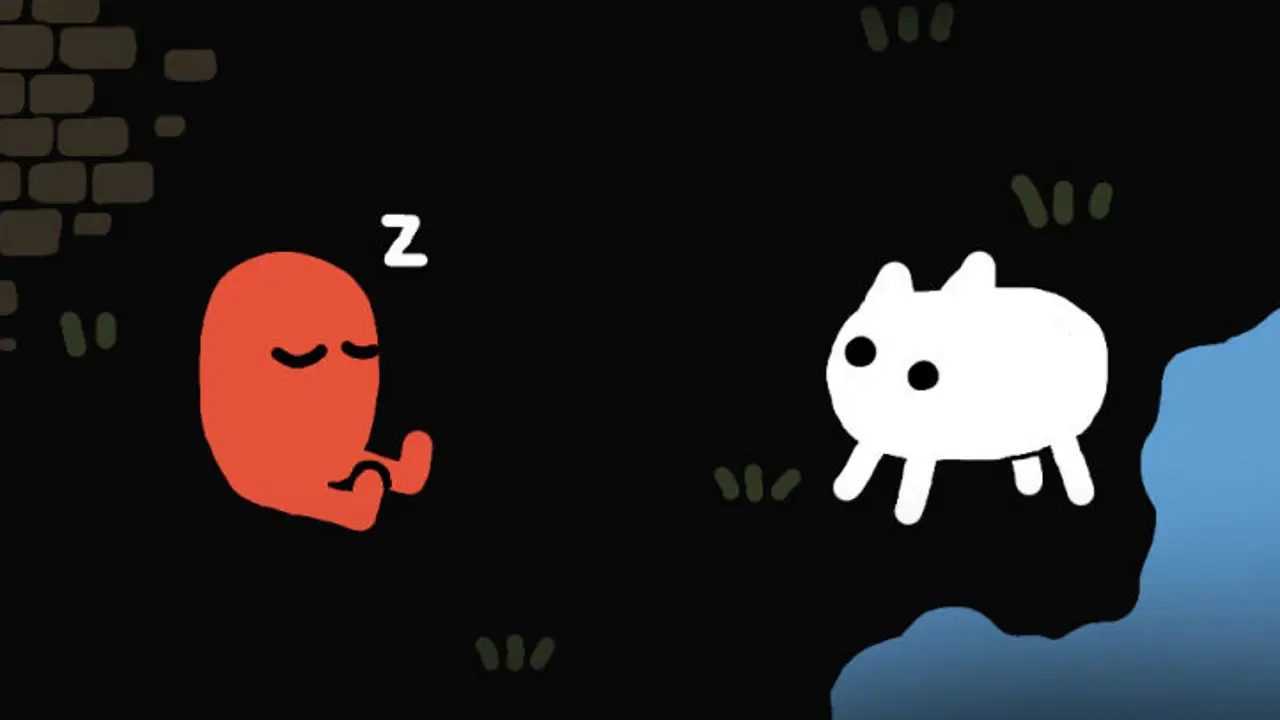The entertainment industry offers thousands of options for leisure, but only logical projects allow you to pump your thinking as much as a muscle-strengthening machine. A selection of puzzle games on a PC forms not just a collection of entertainment content, but an intellectual platform with unique mechanics, the depth of tasks and author’s concepts. Here, it’s not shooting that decides the outcome, but the flexibility of the mind. Each project on our list is an independent universe with original mechanics, visual presentation and unexpected twists of logical chains. Immersion in them does not require speed of reaction, but it develops abstract thinking, attention to detail, and strategic planning.

Portal 2: Teleporters and Paradoxes
Portal 2 holds a leading position in any top of puzzle games on PC due to the balance of innovative mechanics and thoughtful design. The core of the gameplay is the portal gun, which opens two connected portals, between which the character and objects move. But behind the simplicity lies a chain of tasks with elements of physics, timings and interaction with the surrounding world.
Each location is a separate puzzle, including platforms, lasers, gels with different effects and objects to transfer. The game introduces elements one by one, increasing the complexity and varying the approach. The non-linear presentation and colorful characters of GLaDOS and Wheatley create a dense dramatic field. The combination of science fiction and satire adds rich context to the puzzles.
The Witness: Isolated Meditation
 In a selection of puzzle games on PC, it is impossible to bypass The Witness, which is based on observation, symmetry, and visual association. There is no plot in the traditional sense, but instead, the game immerses the player in the atmosphere of a mysterious island, where each maze panel offers a unique solution rule.
In a selection of puzzle games on PC, it is impossible to bypass The Witness, which is based on observation, symmetry, and visual association. There is no plot in the traditional sense, but instead, the game immerses the player in the atmosphere of a mysterious island, where each maze panel offers a unique solution rule.
The game does not restrict the player’s movement. Instead, the player can freely navigate between different areas, where they can solve puzzles based on light, color, reflection, sound, and shadows. The game does not provide direct hints, but instead, they are embedded in the environment. There is no interface in the game. The environment is the main dialogue between the game and the player’s logic. The Witness requires observation, comparison, and memorization, making each success particularly satisfying.
Baba Is You: A Game of Reinterpretation
When verbs become buttons and rules become part of the gameplay, Baba Is You is born. It’s not just about logic; it’s a syntactic revolution. The player changes the laws of the level’s physics by moving the words that form the rules. For example, the phrase “Wall Is Stop” makes walls impenetrable, but by changing it to “Wall Is Push,” they become movable objects.
Baba Is You offers not traditional puzzles but a philosophical system where every word is a variable and every stage is an equation. Mistakes are not punished; they are analyzed. Experiments are encouraged, even if they lead to absurdity. The graphics are extremely simple, but every detail is carefully thought out. The game teaches logic, flexibility, and even the basics of programming through mechanics.
Return of the Obra Dinn: Deduction Without Time
The black-and-white style and the concept of an investigation without action have made Return of the Obra Dinn a cult project within the collection of puzzle games on PC. The main objective is to reconstruct the scene of the crew’s death using only frozen scenes and a single mechanical lens.
There are no predetermined answers; it’s all about observation. The game provides indirect clues through accents, clothing, and body positions. Each name and cause of death are obtained through a deductive chain that only the player can construct. Stylization for old computers, minimalism in management, but maximum density of meanings and options for interpretation. A puzzle for real detectives.
The Talos Principle: a philosophical puzzle game on PC from the top selection
The Talos Principle combines mechanical challenges and metaphysical reflections. The player-controlled robot explores the ruins of ancient civilizations while solving puzzles and answering philosophical questions from the AI system.
The gameplay revolves around manipulating lasers, boxes, fans, and teleporters. However, each action is part of a larger narrative about consciousness, free will, and the future of humanity. Alongside solving puzzles, the player discovers terminals filled with texts, dialogues, and philosophical questions. This makes the game not just a puzzle, but an interactive discussion.
Gorogoa: A Visual Puzzle Beyond the Patterns
Gorgoa does not use traditional controls or texts. The visual language completely replaces the interface, and the puzzles are based not on the logic of numbers, but on the logic of images. The playing field consists of four panels, each of which represents an illustration detail. The player moves, scales, combines and “puts” images into each other — creating meanings at the intersection of shapes, patterns and perspectives.
Instead of the usual gameplay, an artistic composition is used. Horizons connect, buildings become roads, windows turn into portals. Gorogoa offers a truly authorial approach to building logic problems, which cannot be described in words — it can only be experienced. There is no sound clutter, timers, or penalties. The visual style, inspired by oriental miniatures and pencil drawings, creates a unique atmosphere of meditative analysis.
Fez: rotating space as a way of thinking
Fez is a spatial puzzle game on PC from the collection where a two-dimensional world hides a three-dimensional structure. The main character can rotate the entire world around its axis, revealing new paths, hidden elements, and previously inaccessible platforms.
Each level is an encrypted structure. The path is not found; it is created. Rotating is the key to solving the puzzle. The player observes, evaluates the perspective, tests rotations, and searches for the correct configuration. In addition to spatial challenges, Fez includes codes, hidden alphabets, and digital puzzles. The meta-game makes the project especially attractive for those who enjoy decryption and a deductive approach.
Opus Magnum: Alchemy and Engineering in One Bottle
Opus Magnum offers the opportunity to build perfect alchemical machines using articulated manipulators, rotary mechanisms, and logical chains. The game combines the aesthetics of steampunk with engineering precision. The player designs devices that take raw materials and transform them into the desired product. There are no restrictions on the solution; the same level allows for dozens of unique machines, ranging from elegant to bulky. Each machine requires an understanding of the sequence of actions, timing, and repeatability.

Human: Fall Flat is a cooperative puzzle game on PC
Human: Fall Flat offers physics not as a backdrop, but as the main obstacle and tool. Soft-bodied characters with inertia and unstable controls create a chain of tasks that require ingenuity rather than precision. The game implements cooperative mechanics where the second player doesn’t help but makes the task more challenging, which adds to the charm. Dragging boxes, activating platforms, and balancing structures all turn into a chaotic experience that requires coordination and creativity. The game offers humorous falls, spontaneous ideas, and the opportunity to solve a task in a way the developer didn’t anticipate. This is logic in the shell of improvisation.
Monument Valley — geometry of the impossible
Monument Valley is a symbiosis of Escher’s architecture and meditative gameplay. The game is controlled not by the character, but by the structure of the world itself. Bridges move, columns rotate, and angles of perception change.
The game is based on visual illusions: a platform may seem inaccessible, but after the structure is rotated, it becomes a direct path. The focus is not on action logic, but on observation logic and trust in one’s own perception. Each level is an architectural sculpture with minimalistic musical accompaniment. Monument Valley is like an interactive exhibition, where every turn reveals a new picture.
Conclusion
 A selection of puzzle games on PC proves that an intellectual challenge can be just as exciting as a fast-paced shooter or an epic RPG. Each title is not just a task, but a work built on thinking, observation, and abstract analysis. These games do not offer “template” solutions. They require finding new approaches, unconventional solutions, patience, and inner discipline.
A selection of puzzle games on PC proves that an intellectual challenge can be just as exciting as a fast-paced shooter or an epic RPG. Each title is not just a task, but a work built on thinking, observation, and abstract analysis. These games do not offer “template” solutions. They require finding new approaches, unconventional solutions, patience, and inner discipline.
 en
en  ru
ru  de
de  ar
ar  es
es  hi
hi  fr
fr  nl
nl  it
it  pt
pt  el
el 










